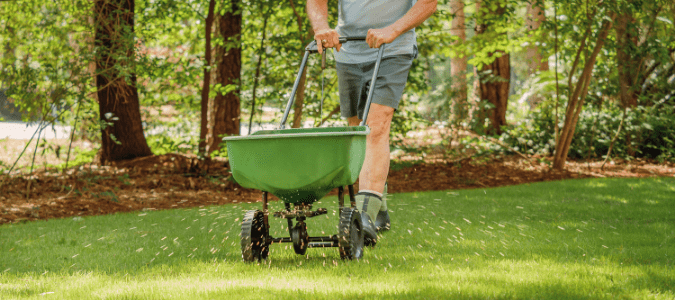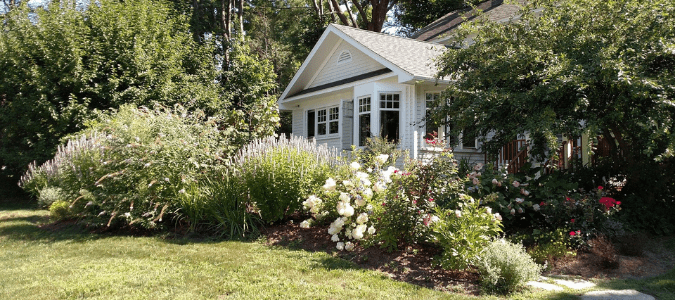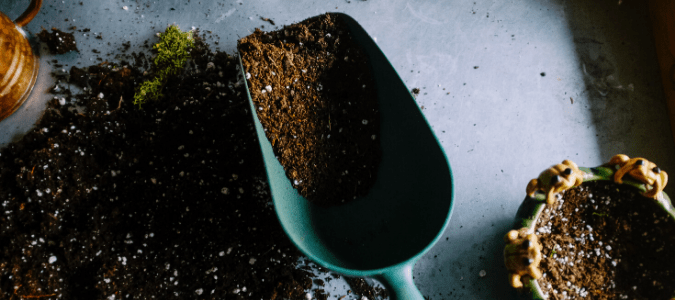Every homeowner wants lush, green grass in their yard. This means grass that is thick, healthy and free of weeds. Knowing how to fertilize your lawn is an important part of regular lawn maintenance. But it can be tricky knowing the right products to use and steps to follow. When should you fertilize? How often? What’s the right nutrient mix for your soil? Let’s explore these questions and more as we learn the right way to fertilize your lawn.
The first step in fertilizing your lawn is to determine the right mixture of nutrients for your grass. Warm-season grasses, like St. Augustine, bermuda and zoysia, need different fertilizer blends than cool-season grasses, like Kentucky bluegrass or rye.
Most yards in southern states have warm-season grasses. These grasses grow best in warmer weather, when it’s at least 75 degrees outside. Warm-season grasses go brown and dormant in the fall if they are not properly cared for. Then, they green up again in spring, when it gets warmer again.
Fertilizers come in blends of three main nutrients: nitrogen (N), phosphorus (P) and potassium (K). Nitrogen helps the grass grow; phosphorus stimulates root growth; and potassium boosts the lawn’s overall vigor and helps it resist diseases.
The N-P-K ratio on a bag of fertilizer is expressed in numbers of each nutrient by weight in the bag. The higher the number, the more of that particular nutrient is in the bag. The best way to know what blend of fertilizer your yard needs is to take a soil sample from your yard and have it analyzed. This information will tell you which nutrients your grass needs most.
If you haven’t had a soil test done, look for a basic 16-4-8 or 15-5-10 blend for fertilizing in spring. For warm-season grasses in most southern yards, including North Texas yards, any fertilizer blend with a higher proportion of nitrogen and lower proportions of phosphorus and potassium should work well.
It’s important to keep in mind that too much of a good thing can be harmful to your grass. Most yards need a nitrogen boost, for example, but too much of this nutrient can actually cause disease and insect problems. It’s also important to apply the right amount of fertilizer to your yard, and not too much. Too much fertilizer will run off into your local watershed. Use no more fertilizer than your yard can completely absorb. This typically means no more than a pound of nitrogen per 1,000 square feet of lawn at a time.
For many people, fertilizing the lawn requires more technical information and careful calculation than they want to handle. This is where hiring a lawn care specialist comes in handy. A professional can create an effective lawn care schedule that is customized to your yard and manage all aspects of lawn care to keep your grass green and thriving.
If you choose to handle fertilizing your grass on your own, here are the basic steps to follow:
- First, water the grass deeply, two to three days before you plan to apply fertilizer. This will prepare the lawn for the nutrients it will receive.
- Next, it’s time to choose your fertilizer and decide how you will apply it. Many fertilizer products come in dry granule form. Others come in liquid form. Grass is able to absorb the nutrients in liquid fertilizer faster, but these products also need to be reapplied more often—monthly or even weekly. Dry fertilizer has a slow release that protects your grass for months at a time.
- For most yards, dry fertilizer is best. You can either spread it by hand, scattering cupfuls of it over the grass, or use a spreader. Spreaders are easiest to use and make it simple to apply fertilizer evenly. They are available at your local hardware or home improvement store.
- You should fertilize your yard first in spring, about six weeks after the last frost. Fertilize again in fall, about six weeks before the first frost is expected. Fertilizing the grass when it’s actively growing gives the grass its best chance of absorbing the nutrients well. This is why it’s best to apply fertilizer in spring after your grass has already come out of dormancy and begun growing again. Many people fertilize around the time their yard needs its first or second mowing in spring.
- If you’re using dry fertilizer and a spreader, be sure to push the spreader rather than pulling it. Start at the outside edge and work your way inward to the center of the yard. Walk at a moderate, steady pace to make sure the fertilizer is spread evenly over the grass.
- After you’ve spread the fertilizer, it’s time to water it in. Give the lawn a good watering, but don’t over-water, as that would cause the fertilizer to run off instead of being absorbed.
- Some yards can benefit from a midsummer fertilizer application along with spring and fall. If you apply fertilizer in summer, choose a product with a 3-1-2 nutrient ratio. Fall fertilizer should have a slightly higher proportion of potassium to protect your grass through the winter.
If the steps above seem daunting, reach out to a specialist who can handle the details, calculations and lawn care for you. That way, you can leave the hard work to a pro and simply enjoy your time outdoors in your beautiful yard.
How to Fertilize Plants
Grass isn’t the only thing that benefits from periodic applications of fertilizer. Quality potting soil along with compost and mulch will help a lot, but these won’t always give plants the nutrients they need to thrive. Knowing how to fertilize plants, including those in your garden beds as well as those in planters, will help you maintain a lush and beautiful yard. Flowering and fruit-bearing plants and trees especially will benefit from applying the right fertilizer.
Just as with lawn fertilizer, plant fertilizer comes in liquid or dry form, and in various proportions of nitrogen, phosphorus and potassium. Most plants benefit from a fairly balanced blend of these three macronutrients. A 10-10-10 blend will give a good boost to most gardens.
Container plants can especially benefit from fertilizer, since they are growing in a limited amount of soil. This is true of indoor plants, too. Your houseplants will also get a needed boost from fertilizer. Remember that actively growing plants absorb fertilizer best, and it’s better to apply too little than too much. Over-fertilizing plants can cause their leaves to turn yellow or brown.
Fast-growing plants that produce lots of flowers or fruit will need more frequent fertilizer applications than slower-growing or non-flowering plants. Roses, fruit trees and vegetable gardens can all benefit from monthly applications of liquid fertilizer.
Non-flowering trees, shrubs and perennials don’t need as much fertilizer. One application in spring, along with a compost or mulch refresh, will be just fine.
A specialist knows the right types and amounts of fertilizer to apply to your lawn, trees and garden beds, and when to apply them. They can manage all aspects of keeping your landscaping beautiful and thriving throughout its growing season.
What Does Fertilizer Do?
Anyone with grass in their yard wants it to stay thick and lush. Fertilizer is an essential part of keeping grass healthy, yet it’s something of a mystery to many home gardeners. What does fertilizer do? The answer is, quite a lot. Fertilizer helps grass grow deep, strong roots. Good roots and thickly growing blades help the lawn retain moisture. This protects it from both heat and drought. Fertilizer also cuts down on weeds and helps grass resist common diseases.
The old truism about too much of a good thing definitely applies in the case of fertilizer. While fertilizing your grass is important, too much of it can actually have the opposite effect. Applying fertilizer at the wrong time of year can also damage your grass.
Fertilizer should be applied only to actively growing grass. This helps to ensure the grass will be able to absorb and use the nutrients in the fertilizer. For this reason, fertilizer should never be applied to dormant grass in fall or winter. The first application of fertilizer should be done in spring, after the grass has already started greening up and growing again. Timing your first fertilizer application to the second or third mowing is a good rule of thumb.
No more than a pound of nitrogen per 1,000 square feet of grass, per application, is another good rule of thumb. Too much nitrogen can damage your grass and turn it yellow. Too much potassium is also bad, as it can invite insect and disease problems.
To apply the right type and amount of fertilizer to your yard, you need to know how many square feet of grass you have. This requires measuring your yard, which is easy if it’s square but less so if it’s an odd shape or broken up into sections.
For many people, it’s easiest to hire a lawn care professional to manage all aspects of yard care throughout the year. This includes your yard’s fertilizer needs, including which type and blend of fertilizer to use and when to apply it. Your lawn care professional can also tend to your trees and garden beds along with your grass, so you can enjoy a beautiful, thriving outdoor space.
ABC Can Keep Your Lawn Healthy and Green
Taking care of your grass can take a lot of work. If you would rather spend your weekend enjoying your yard, contact ABC Home & Commercial Services. Our lawn care team can give you that healthy green grass you’ve been looking for. We even have a team who can refresh your landscaping!



